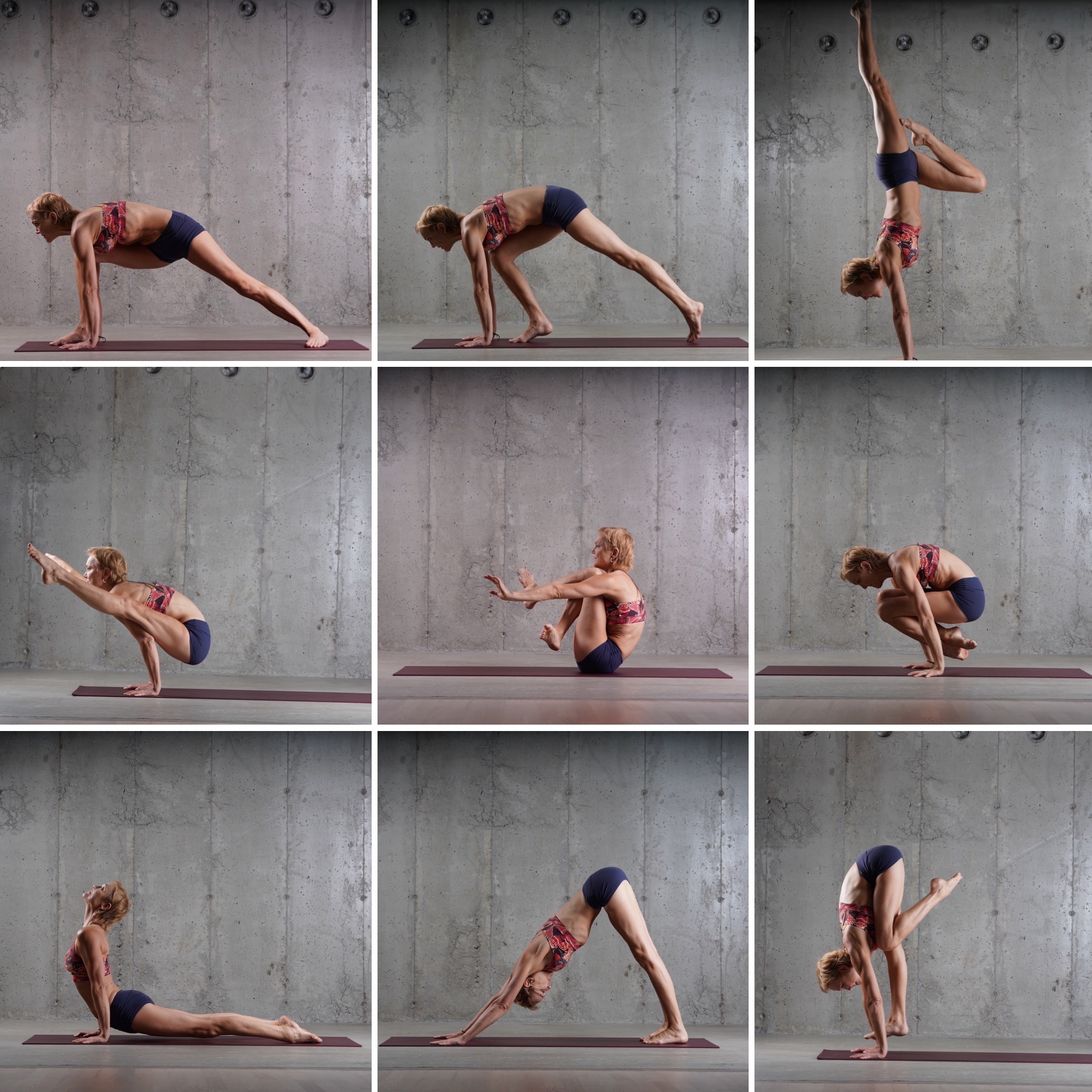
My method is Ashtanga. I don’t really know any other system of yoga than this one that I have been practicing and teaching for more than 30 years now. I do however, draw from a multitude of resources (dance, body work, body-mind centering, meditation, philosophy) which are all filtering through the prism on one technique. In this way Ashtanga becomes form through which I teach a whole lot of other stuff: mastery, patience, embodied anatomy, concentration, discipline, acceptance and body awareness – just to mention a few of them.
Is Ashtanga a difficult practice?
Many people regard ashtanga as a “difficult” practice, a practice for the elite students and advanced achievers. As teachers it might therefore seem that our work is limited to serve a small part of the population. My answer to this is that sure, Ashtanga yoga has its challenges but it also contains two unique elements that can be achieved by all people, namely the state of flow and the establishment of self-practice or sadhana.
What is the appeal of Ashtanga Yoga?
Flow is defined as the optimal state of being when you have enough challenge and equally mastery to stay focused and yet at ease in what you are doing. It is a state in which self-consciousness subsides and you are “one with” your task. Needless to say, you cannot obtain this state by being too passive nor by being overly concerned with succeeding in what you are doing.
When do I master Ashtanga?
From the teachers point of view, I notice the breakthrough in students the moment the practice goes from being a struggle to suddenly becoming flow. From then on my job is easy. I don’t need to advocate the benefit of the practice any more as it becomes embedded in the student on an experiential level. This is the point when the student no longer tries out how far she is into the tough techniques. Instead, the breath and the brain and movement starts to move together, the mindful student experiences an elongation of the spine as she inhales. It could also mean becoming acquainted with gravity, experiencing for the first time a real physical connection to both space and earth.
Why are there so many series and asanas in Ashtanga?
Once mastery is gained, however, we want new challenges and therefore, we have many asanas and more, there are new series to draw from over time. In this way student, regardless of level is always held in in a state between challenge and mastery, a state that promotes confidence but also humility. Our task as teachers is both to challenge the students when appropriate, but also to promote a certain well being and grounding within the practice.
How is Ashtanga different from other forms of yoga?
The second element, self practice, is an empowerment of the individual. There is a great difference between “attending classes” and having ones own individually monitored practice. The first makes you a student, while the latter makes you a practitioner. Being a practitioner requires self-investigation and discovery and your relation to your teacher is more in the form of having a personal mentor than having an instructor. Establishing a self-sustained practice is also a necessary basis for any further spiritual pursuit as any spiritual sadhana requires a self-driven discipline from the student.
Do all Ashtanga teachers teach the same thing?
Lastly: As teacher we all have unique backgrounds and knowledge that we can communicate through the form of Ashtanga yoga. One of them is simply our own practice experience. I think once we realize that the Ashtanga form itself is not the aim but rather what we are communicating through it, we can easily adapt this practice to different groups of people according to their needs. In that way can and provide each and every student with his or her unique experience!
